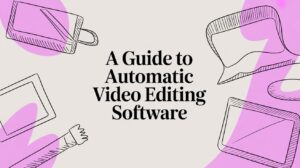Introduction: Making Sense of Video Editing Terms
In today’s fast-paced digital world, short-form video is king. Platforms like TikTok, Instagram Reels, and YouTube Shorts demand a constant stream of engaging, bite-sized content. But how do you efficiently turn hours of footage – whether from podcasts, webinars, or longer videos – into compelling shorts? This is where understanding video editing techniques like clipping, cutting, and splitting becomes crucial, especially with the rise of AI-powered tools that automate the process. For content creators, podcasters, businesses, and even developers, knowing the difference between video and video clip manipulation techniques can save significant time and boost content performance. Many creators struggle with the question, “how do i automatically clip a video?” – a challenge AI platforms like Swiftia.io are built to solve.
Background and Context: The Short-Form Video Boom
Content creators leverage TikTok, Reels, and Shorts to capture audience attention quickly, build communities, and drive engagement. Businesses use these platforms for brand awareness, lead generation, and product promotion, often repurposing existing long-form content like webinars or interviews. Developers might be building applications that require integrated video editing features. The demand is clear: according to Rival IQ’s 2025 report, while overall engagement rates dipped slightly, platforms like TikTok still lead (source). Efficiently creating content for these platforms is paramount.
Swiftia.io enters this space as an AI-driven platform specifically designed for transforming long videos into multiple engaging shorts – a key tool for effective “video to shorts” strategies. It uses AI not just for basic editing but for identifying potentially viral moments, adding accurate captions, and streamlining the workflow. Swiftia caters to both non-technical users with its intuitive interface and developers seeking advanced integration through its unique API.
Essential Strategies: Understanding and Automating Editing Techniques
Let’s break down these core editing techniques and how AI, particularly Swiftia.io, helps you master them.
What is Video Clipping?
Clipping involves extracting specific, often self-contained segments or highlights from a longer video. Think of pulling out the most impactful quote from an interview or the funniest moment from a podcast. AI tools excel here by analyzing transcripts and video context to identify these high-potential moments automatically. This directly addresses the common need: “how do i automatically clip a video?” Swiftia’s AI identifies these key segments, suggesting multiple clips from a single source video, saving you hours of manual searching.
What is Video Cutting?
Cutting refers to removing unwanted portions *within* a segment or joining different segments together. This could mean:
- Removing pauses, filler words (“ums,” “ahs”), or mistakes within a clip.
- Trimming the beginning or end of a selected clip for better pacing.
- Joining two separate clips together seamlessly.
Knowing how to cut parts of a video precisely is essential for clean, professional-looking shorts. Swiftia offers features like automated filler word removal, contributing to a polished final product.
What is Video Splitting?
Splitting involves dividing a longer video into multiple, usually sequential, smaller parts. Unlike clipping, which seeks highlights, splitting often aims to break down content logically, like chapters in a tutorial or segments of a long presentation. While some AI tools focus solely on highlight clipping, understanding splitting is useful for structured content repurposing. The question “how do i automatically split a video?” might arise if you want to create a series of connected shorts from a single webinar. While Swiftia’s primary focus is highlight clipping, its API allows developers to define specific start/end times using the `predefinedShorts` option, effectively enabling manual splitting if needed.
How AI Automates These Processes
AI clip editing tools like Swiftia analyze various data points:
- Transcription Analysis: Identifying keywords, questions, and moments of high energy or key information.
- Speaker Detection: Focusing the frame on active speakers.
- Visual Analysis: Detecting scene changes or engaging visual elements.
- Engagement Prediction: Some tools, like Swiftia, even estimate the potential virality of generated clips.
This automation transforms the laborious task of manual editing into a fast, efficient process, allowing you to focus on strategy and creativity.
Why Swiftia.io Stands Out for Automated Editing
While several tools offer AI video clipping, Swiftia.io provides distinct advantages:
How Does Swiftia.io Save You Money? (Affordability)
Swiftia offers highly competitive pricing. Comparing yearly plans based on cost per hour of processed video:
- Swiftia: $1.30/hour (Swift plan) to $1.70/hour (Starter plan)
- Opus Clip (Popular Competitor): $1.90/hour (Annual equivalent) – Higher than Swiftia’s entry point. (Competitor pricing based on provided documentation).
- Other competitors like Vidyo ($3.30/hr+) and Klap ($1.51/hr+) show Swiftia remains a cost-effective solution. See our competitor comparison blog post for more details.
This affordability makes powerful AI clip editing accessible to a wider range of users, from solo creators to budget-conscious businesses.
Custom Captions and Styling Made Easy (Customization)
Engagement often hinges on presentation. Swiftia excels in customization:
- Automated Captions: 97%+ accuracy in over 90 languages.
- Styling Presets: Apply styles like “VIRAL” or “DEEP DIVER” with one click.
- CSS-Level Control (via API): Developers can fine-tune caption appearance (color, font, animation timing, `maxWordsInPage`) using the Render API options.
- Custom Watermarks: Paid users can add their own branding via the UI or API.
This level of control ensures your shorts align perfectly with your brand aesthetic.
Developer Flexibility with the API
Swiftia is unique among many competitors (like SendShort, which lacks an API) in offering a robust, ready-to-use API. This empowers developers to:
- Integrate Swiftia’s clipping and rendering directly into custom applications or workflows.
- Automate content repurposing at scale.
- Programmatically define shorts using the `predefinedShorts` option in the VideoShorts job creation endpoint.
- Leverage webhooks for seamless integration.
This API-first approach provides unparalleled flexibility for businesses and developers needing scalable video solutions.
Technical Aspects of Optimization
Beyond the editing techniques, technical optimization matters. Ensure your content includes relevant metadata. For instance, an optimized SEO title might be “AI Video Clipping: Cut & Split Shorts Fast | Swiftia.io” (under 60 chars) and a meta description like “Learn the difference between video clipping, cutting & splitting. See how Swiftia.io’s AI automatically creates shorts, saving time & money. API available.” (under 160 chars). Implementing Schema.org markup, especially for FAQs (as included below), helps search engines understand your content better, potentially leading to rich results.
Building and Maintaining Authority
Staying relevant means understanding trends. The move towards AI-driven content creation isn’t just about efficiency; it’s about enabling creators and businesses to keep up with the demand for fresh, engaging short-form video. By providing powerful yet accessible AI tools and a unique API, Swiftia positions itself as a forward-thinking solution aligned with the future of content marketing.
Tailoring for Specific Platforms or Audiences
The beauty of AI repurposing is tailoring content.
- Content Creators & Podcasters: Focus on Swiftia’s ease of use, speed, and features that enhance virality (like caption styles) to maximize reach on TikTok, Reels, and Shorts.
- Businesses: Emphasize the ROI – saving employee time, repurposing valuable webinar/podcast content for marketing, and leveraging the API for consistent branding across clips.
- Developers: Highlight the API’s capabilities for integration, automation, scalability, and creating custom video workflows within their own platforms.
Measuring and Adapting Strategies
Creating clips is just the start. You need to measure what works. Track metrics like views, watch time, shares, and click-through rates using platform analytics (like Instagram Insights or YouTube Studio) and tools like Google Analytics for website traffic from social links. Monitor audience feedback and adapt your strategy. For example, if shorter clips consistently outperform longer ones on TikTok, adjust your clipping parameters or selection accordingly. Understanding platform algorithms, like YouTube Shorts’ explore/exploit phases (source), helps inform content choices.
Frequently Asked Questions (FAQs)
What’s the main difference between video clipping, cutting, and splitting?
Clipping extracts specific highlights or key moments from a longer video. Cutting involves removing unwanted parts within a clip (like filler words) or joining clips. Splitting divides a long video into sequential segments, like chapters.
How does Swiftia.io help with these editing techniques?
Swiftia uses AI to automatically identify and extract engaging clips (clipping) from long videos. It also offers features like filler word removal (a form of cutting). While primarily focused on clipping, its API allows for manual splitting by defining custom start/end times.
What makes Swiftia.io different from tools like Opus Clip?
Swiftia stands out with its highly competitive affordability, extensive customization options (especially via CSS for captions), and a unique, publicly available API for developers seeking integration and automation. Many competitors, including popular ones, lack this robust API offering.
Who benefits most from using Swiftia.io’s API?
Developers, agencies, and businesses looking to automate their video creation workflow, integrate AI editing into their own platforms, or achieve highly customized, scalable video to shorts production benefit immensely from Swiftia’s API.
Conclusion: Edit Smarter, Not Harder with Swiftia.io
Understanding the nuances between clipping, cutting, and splitting helps you approach video editing more strategically. AI tools have revolutionized this process, and Swiftia.io offers a powerful, efficient, and uniquely flexible solution. Whether you need to automatically clip highlights, desire deep customization for captions and branding, or require API integration for automated workflows, Swiftia delivers.
Compared to alternatives like Opus Clip, Swiftia provides compelling advantages in affordability and, crucially, its developer-friendly API. You can transform your long-form content into engaging short-form video faster and more cost-effectively, freeing up valuable time to focus on content strategy and audience growth. Ready to streamline your video editing? Explore Swiftia.io today.


